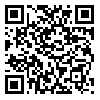دوره 10، شماره 6 - ( 8-1398 )
جلد 10 شماره 6 صفحات 578-567 |
برگشت به فهرست نسخه ها
Download citation:
BibTeX | RIS | EndNote | Medlars | ProCite | Reference Manager | RefWorks
Send citation to:



BibTeX | RIS | EndNote | Medlars | ProCite | Reference Manager | RefWorks
Send citation to:
Madadi S, Katebi M, Eftekharzadeh M, Mahdipour A, Pourheydar B, Mehdizadeh M. Partial Improvement of Spatial Memory Damages by Bone Marrow Mesenchymal Stem Cells Transplantation Following Trimethyltin Chloride Administration in the Rat CA1. BCN 2019; 10 (6) :567-578
URL: http://bcn.iums.ac.ir/article-1-1172-fa.html
URL: http://bcn.iums.ac.ir/article-1-1172-fa.html
Partial Improvement of Spatial Memory Damages by Bone Marrow Mesenchymal Stem Cells Transplantation Following Trimethyltin Chloride Administration in the Rat CA1. مجله علوم اعصاب پایه و بالینی. 1398; 10 (6) :567-578
چکیده:
Introduction: Trimethyltin Chloride (TMT) is a neurotoxin that can kill neurons in the nervous system and activate astrocytes. This neurotoxin mainly damages the hippocampal neurons. After TMT injection, behavioral changes such as aggression and hyperactivity have been reported in animals along with impaired spatial and learning memory. Hence, TMT is a suitable tool for an experimental model of neurodegeneration. The present study aims to determine the palliative effects of Bone Marrow-derived Mesenchymal Stem Cells (BM-MSCs) on the hippocampi of rats damaged from TMT exposure.
Methods: We assigned 28 male Wistar rats to the following groups: control, model, vehicle, and treatment. The groups received Intraperitoneal (IP) injections of 8 mg/kg TMT. After one week, stem cells were stereotactically injected into the CA1 of the right rats’ hippocampi. Spatial memory was determined by the Morris Water Maze (MWM) test 6 weeks after cell transplantation. Finally, the rats’ brains were perfused and stained by cresyl violet to determine the numbers of cells in the Cornus Ammonis (CA1) section of the hippocampus. We assessed the expressions of Glial Fibrillary Acidic Protein (GFAP) and Neuronal-specific Nuclear (NeuN) proteins in the right hippocampus by Western blot.
Results: The MWM test showed that the treatment group had significantly higher traveled distances in the target quarter compared with the model and vehicle groups (P<0.05). Based on the result of cell count (Nissl staining), the number of cells increased in the treatment group compared with the model and vehicle groups (P<0.05). Western blot results showed up-regulation of GFAP and NeuN proteins in the model, vehicle, and treatment groups compared with the control group.
Conclusion: Injection of BM-MSCs may lead to a behavioral and histological improvement in TMT-induced neurotoxicity by increasing the number of pyramidal neurons and improving memory.
Methods: We assigned 28 male Wistar rats to the following groups: control, model, vehicle, and treatment. The groups received Intraperitoneal (IP) injections of 8 mg/kg TMT. After one week, stem cells were stereotactically injected into the CA1 of the right rats’ hippocampi. Spatial memory was determined by the Morris Water Maze (MWM) test 6 weeks after cell transplantation. Finally, the rats’ brains were perfused and stained by cresyl violet to determine the numbers of cells in the Cornus Ammonis (CA1) section of the hippocampus. We assessed the expressions of Glial Fibrillary Acidic Protein (GFAP) and Neuronal-specific Nuclear (NeuN) proteins in the right hippocampus by Western blot.
Results: The MWM test showed that the treatment group had significantly higher traveled distances in the target quarter compared with the model and vehicle groups (P<0.05). Based on the result of cell count (Nissl staining), the number of cells increased in the treatment group compared with the model and vehicle groups (P<0.05). Western blot results showed up-regulation of GFAP and NeuN proteins in the model, vehicle, and treatment groups compared with the control group.
Conclusion: Injection of BM-MSCs may lead to a behavioral and histological improvement in TMT-induced neurotoxicity by increasing the number of pyramidal neurons and improving memory.
نوع مطالعه: Original |
موضوع مقاله:
Behavioral Neuroscience
دریافت: 1397/2/9 | پذیرش: 1397/10/18 | انتشار: 1398/8/10
دریافت: 1397/2/9 | پذیرش: 1397/10/18 | انتشار: 1398/8/10
| بازنشر اطلاعات | |
 |
این مقاله تحت شرایط Creative Commons Attribution-NonCommercial 4.0 International License قابل بازنشر است. |





